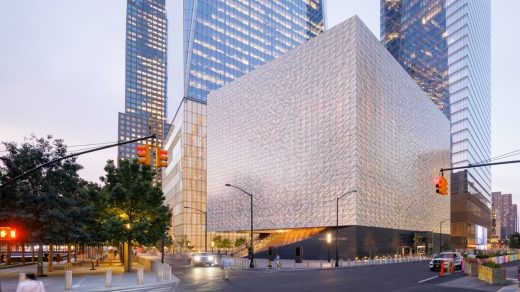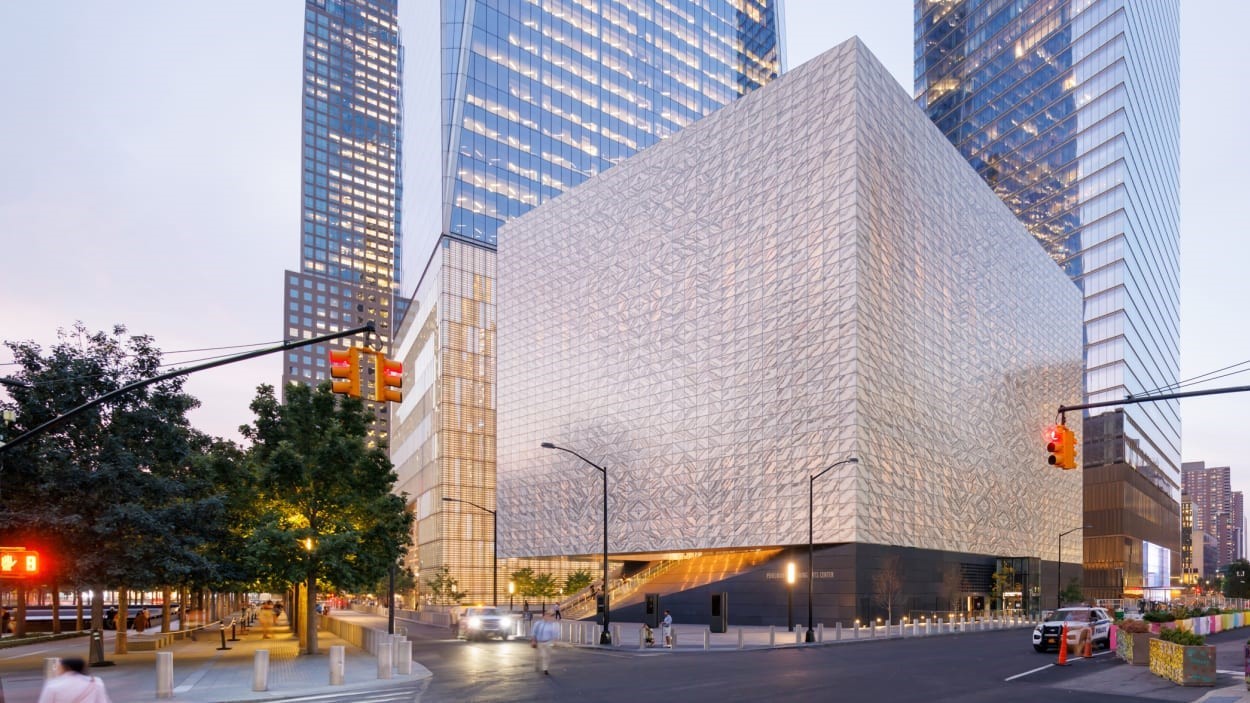Inside the World Trade Center’s new glowing cube
A new type of theater building has been blossoming over the past decade. Let’s call it the “transformer theater,” where walls can drop from ceilings and entire seating rows can lift up and down on command. Such is the premise behind the Dee and Charles Wyly Theatre in Dallas, the soon-to-open Lindemann Performing Arts Center at Brown University—and the Perelman Performing Arts Center, or PAC NYC, which just opened in Lower Manhattan.
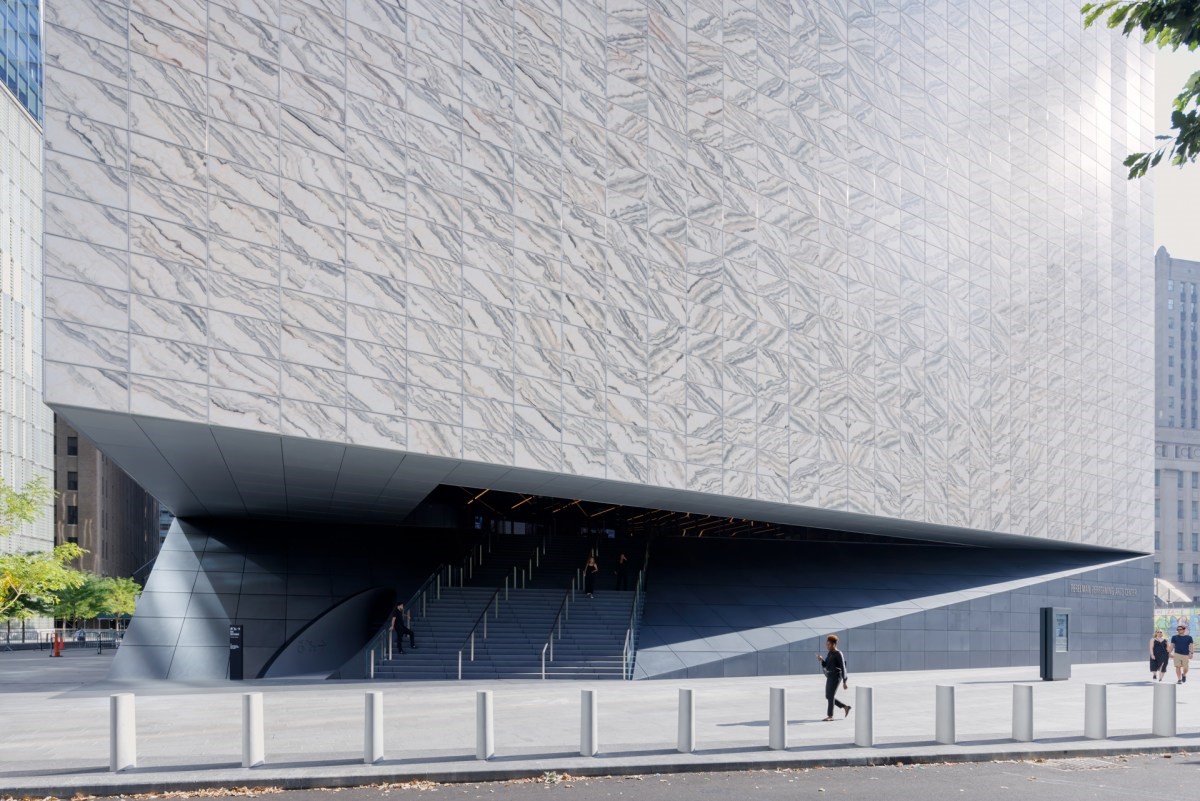
The much anticipated, $500 million building by no means deserves to be lumped in with other transformer theaters. It is a unique building with a unique set of challenges, but perhaps it is the most deserving of that description for a very simple reason: It doesn’t just make room for change, it also sits on a corner of New York City that has been in flux for more than 20 years.
For the uninitiated, PAC NYC is the last major piece of the puzzle in the redevelopment of the shattered World Trade Center complex. It opened 22 years and 2 days after the Twin Towers were attacked and collapsed, killing nearly 3,000 people, and the subsequent dust cloud that swallowed Lower Manhattan cleared to reveal “Ground Zero.” To borrow the words of Paula Grant Berry, a founding board member of the 9/11 Memorial & Museum who lost her husband, David Berry, that day: The World Trade Center campus today can count “three essential monuments to make sure the world never forgets”—an outdoor memorial where people can go to reflect, a museum for people to learn what happened on 9/11, and a performing arts center for people to celebrate life.
PAC NYC doesn’t quite complete the puzzle. The plot right next to it has cycled through various designs and remains an unfinished construction site encased in colorful fencing. Still, the performing arts center’s marble-cube building fills a glaring gap in the makeup of a neighborhood that had to be rebuilt from scratch. According to former mayor Michael Bloomberg, who presented the facts at the building’s ribbon cutting ceremony, Lower Manhattan has gained twice as many apartments since 2001, almost 40 new schools and daycares, and over 35 new hotels.
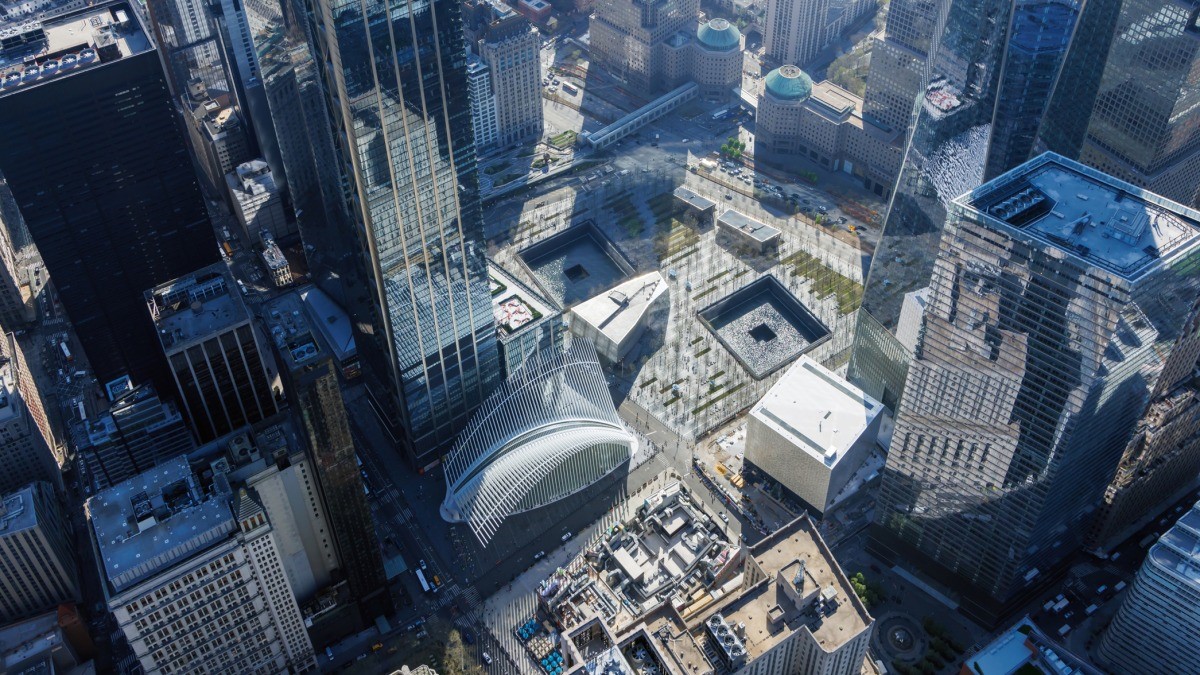
The World Trade Center campus in particular has gained four new skyscrapers (glass towers of varying architectural merits); two chilling, sunken pools that serve as the 9/11 Memorial, forever marking the absence of the Twin Towers; and a swooping, if controversial, flying bird of a shopping mall (aka, the Oculus) that doubles as a cavernous transit hub. About the only thing that was missing from the area (apart from affordable housing) was a dedicated place for culture—a glowing monument to remind us why we are alive.
Anywhere else, this would sound grandiose; but here, it is sobering.
Spanning 129,000 square feet across three floors, PAC was designed by local architecture firm REX, in collaboration with theater consultant Charcoalblue. (REX is also behind the above-mentioned Wyly Theatre and the performing arts center at Brown University.)
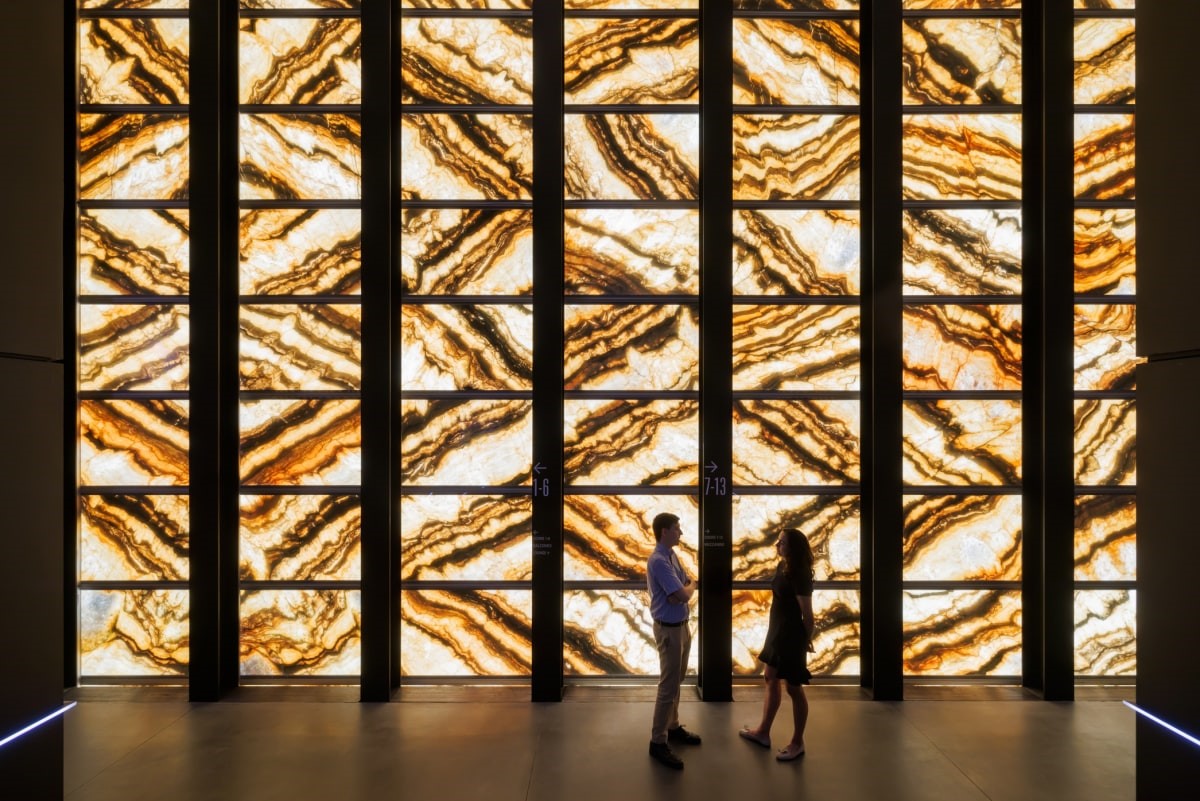
PAC NYC has two striking features: The first is visible to the naked eye, namely its translucent marble facade. By day, sunlight filters through the facade and paints the interior of the building in a soft amber glow; by night, the effect is reversed as LED lights illuminate the facade from within.
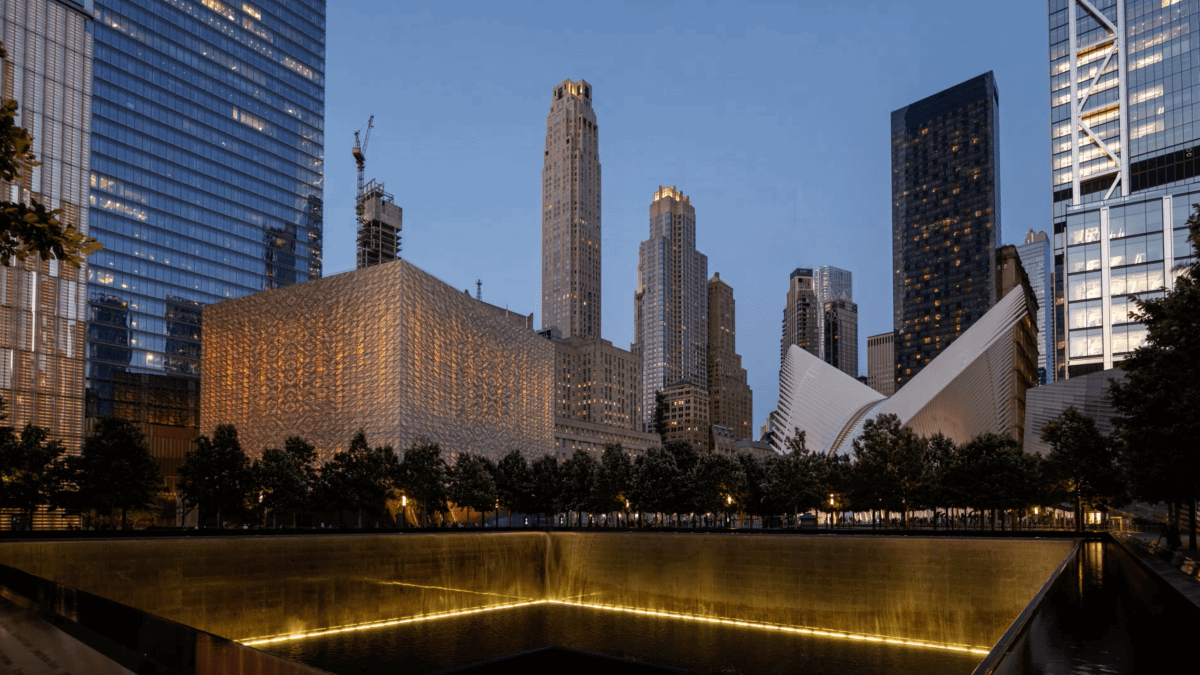
The second lies behind the scenes and is, of course, the reason I dubbed it a “transformer theater.” PAC NYC is home to three performance spaces. All of them are located on the same floor and laid out in an L-shape, but they can be used concurrently thanks to foot-thick rubber pads and isolation joints that circumscribe the entire box. (The team tested its design by holding a rock n’roll concert at the same time as a spoken word performance.)
Each theater is equipped with a wild array of mechanisms and contraptions, including 46-ton “guillotine walls” that can help subdivide one space or combine several of them, and seating systems that can go from tiered to level in a matter of minutes. In total, the venues can support a whopping 60 configurations.
Now, many theaters tout this level of flexibility. Some, like The Shed in New York City’s Hudson Yards, even carry the name of black box theaters, where the sheer simplicity of the space is intended to allow for a range of options. The problem with black box theaters is that the level of flexibility they were built for can be too broad and the potential of the venue too vague, leading to less variation instead of more.
The PAC NYC space, explains REX’s founding principal, Joshua Ramus, comes with a number of “presets,” or a menu of settings that artists and PAC’s artistic directors can flip through and work with. Alysen Fiore, a director at REX, notes that programming for the venue began about three years ago, which gave the architects a very clear set of rules for discussing with various artistic teams in the city.
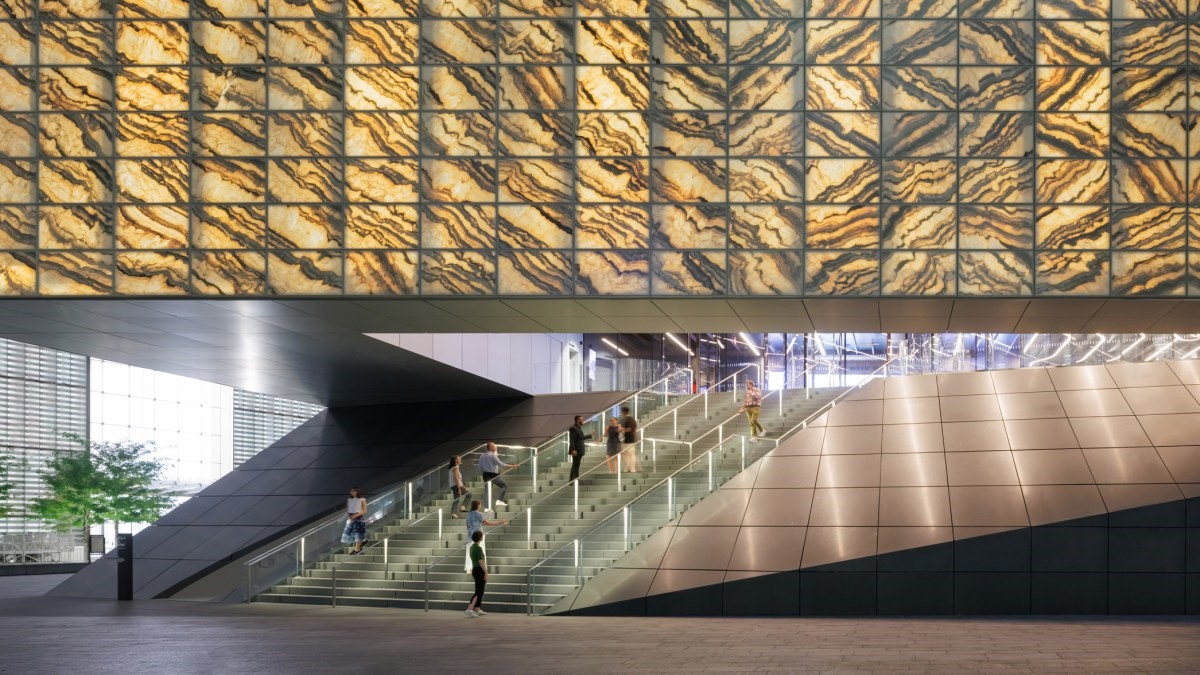
Ultimately, none of this complexity shows from the outside. Instead, the building looks like a monolithic cube that brings all the venues under one pure geometric form and gives it a warm presence that is quite unlike anything else nearby. “We wanted something that was a very sober, respectful response,” says Ramus. “And sometimes, being the quietest voice actually stands out.”
(8)

